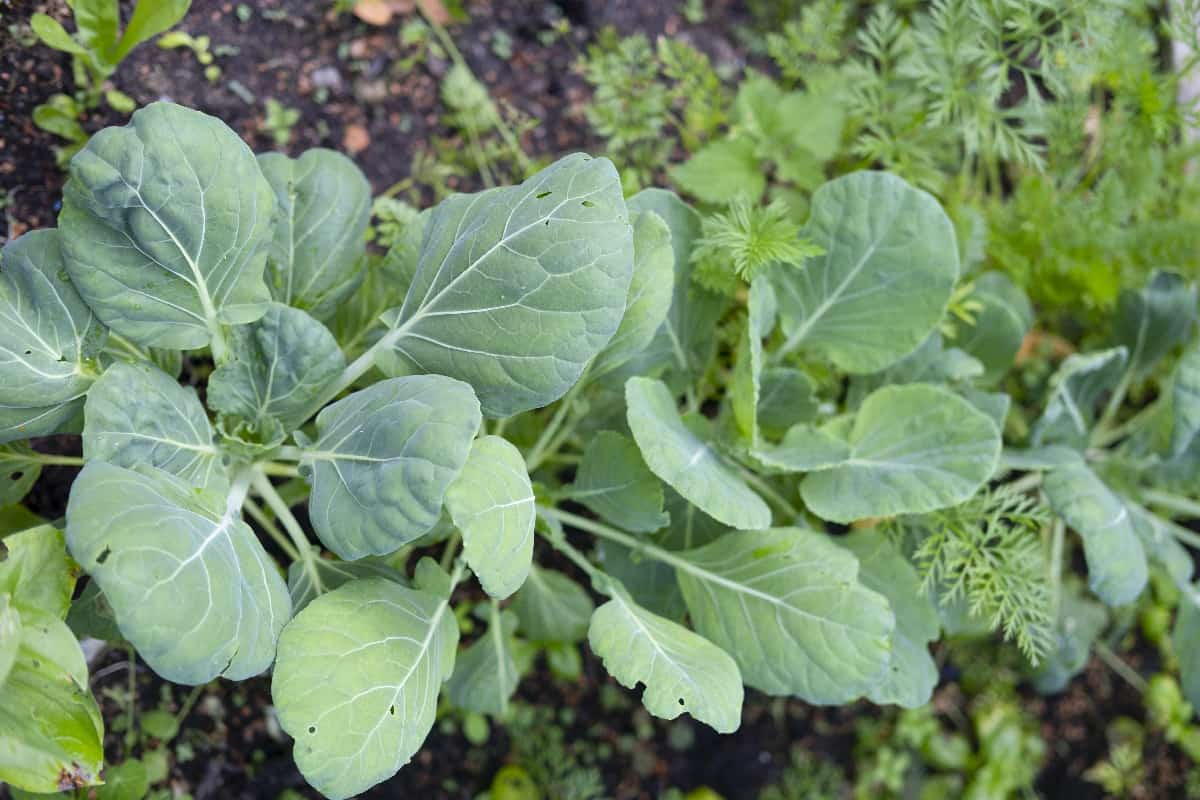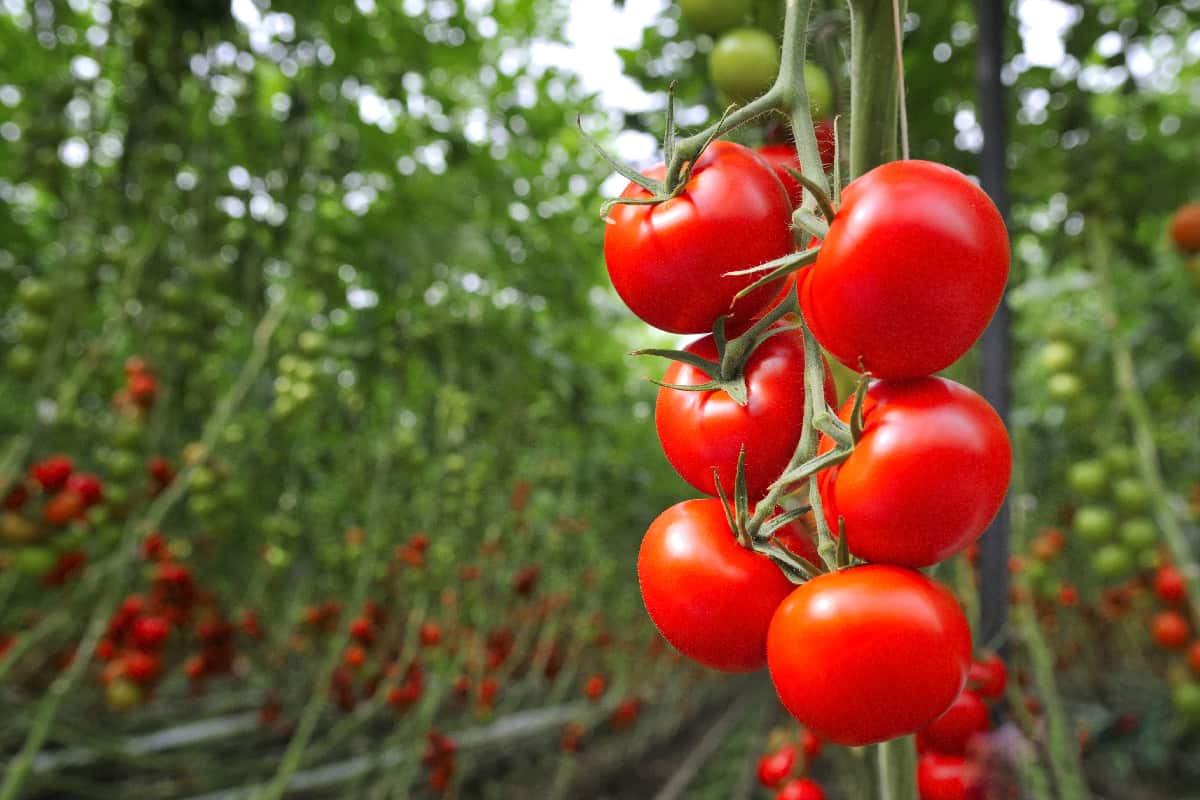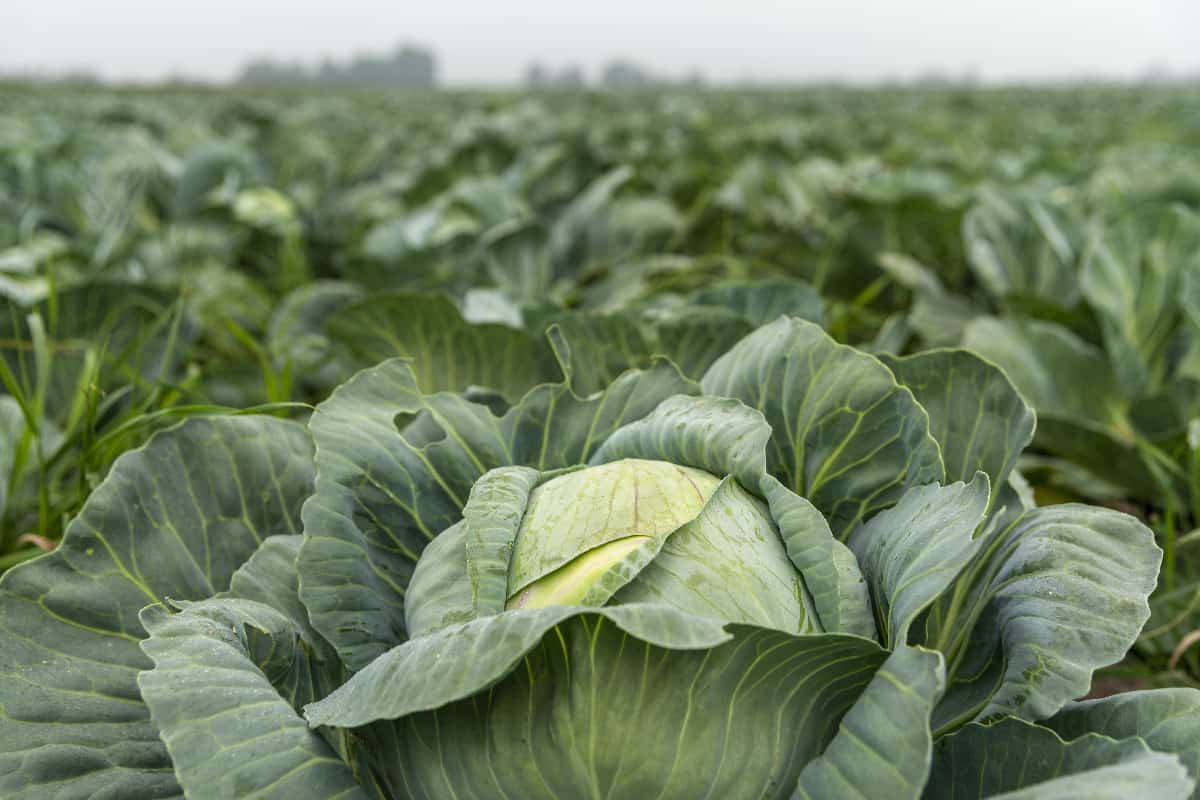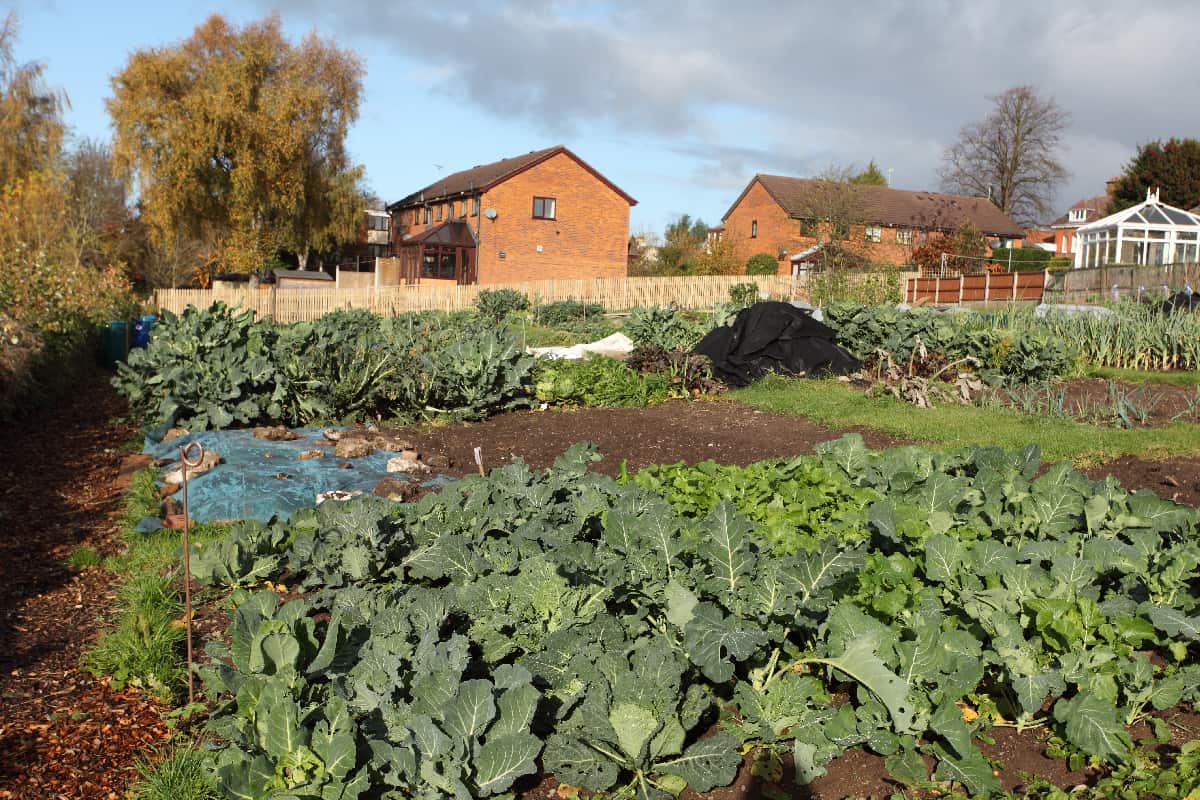Finding new things to grow in your garden can be exciting and stressful at the same time. Do you have brassicas (cabbage) you want to try and plant but have sandier soil? Will these vegetables grow in sandy ground? Well, we've done some research and have the answers below. Let's dive in!
In general, brassicas will not grow well in sandier soils. Since cabbage/other brassica vegetables feed heavily, it requires soil with plenty of nutrients and water-holding qualities. Sand, however, tends to move water quickly and isn't considered nutrient-rich.
Therefore, planting brassicas in the sandier, looser ground won't likely end well for your crops.
As we start this article, we will cover all things growing brassica crops and discuss what type of soil you need for this. Whether you're new to cabbage growing, recently moved to the desert, or have other related questions, we're here to assist. With that said, let's get right into this topic below!
![A brussel sprout plants growing in a vegetable plot, Will Brassicas Grow In Sandy Soil? [Everything You Need To Know]](https://gardentabs.com/wp-content/uploads/2022/10/Will-Brassicas-Grow-In-Sandy-Soil-Everything-You-Need-To-Know.jpg)
What Type Of Soil Do Brassicas Grow Best In?
You will usually find that brassica crops do best in somewhat loamy soils. Specifically, the ground your veggies are in needs to be well-drained yet moisture-retentive for your cabbage to grow.
As we said above, this species feeds heavily, meaning the ground it's in should be filled with nutrients. According to the University of Minnesota, brassica prefers neutral soil with a pH of 6-7.

Generally, cabbage (and vegetables as a whole) need soil that is compacted enough to sustain their roots and feed them, but not to the point it's clay. Finding the perfect balance can be tricky, but it is possible.
In addition, you might want to consider placing well-rotted manure or compost in spring or fall in your brassica's soil, as this will help increase its overall nutrients.
With that said, drainage is key for healthy cabbage. Therefore, you don't need to add too many layers of compost to the soil, as this can lead to waterlogging and root rot.
Will Cabbage Grow In Sandy Soils?
Although cabbage will grow in sandier grounds, this can be a bit trickier than loamy options. As we covered, sandy soil won't hold water or nutrients for long.
So, you will likely need to amend the soil with fresh manure or compost. Additionally, if you're having issues with water draining too fast, you can also add mulch to the base of your crops.
Many gardeners recommend against planting brassicas and other nutrient-dependent crops in sandy conditions, which can lead to premature death or low yields.
Especially if you're planting vegetables to harvest and sell, not giving your crops the correct soil can set you back financially. So for the sake of your produce, try and plant them in loamy, nutrient, and water-holding ground.
Do Brassicas Need Deep Soil?
No. Considering you only need to plant brassica seeds 1/2 inches below the ground's surface, their total amount of space isn't super important.
That said, you want to ensure your produce has room to sprawl a bit and develop a strong root system. So, if you're growing your cabbage in a pot or raised bed, try and have at least 6-12 inches of soil below it.
Leaving that extra space can be helpful for other crops nearby and allow your plants to extend downwards. Generally, deeper roots make for stronger, healthier vegetables.
That's because the depth allows for more nutrients to be absorbed along with water. Furthermore, if you live somewhere that experiences drought, having more soil below your brassicas means they can store water for later.
However, cabbage is typically shallow-rooted, so leaving extra space may not do much at first for your plants.
Do Brassicas Have Shallow Root Systems?
Yes. Unfortunately, brassicas tend to have very shallow, unstable root systems. These shallow roots can make tending to your crops more difficult, especially for hoeing.
However, adding mulch around a cabbage plant's base can help stabilize it. The weight of the wood chips will help secure your plant into its spot, which can be helpful during windier periods.
As we said above, you can also try giving your brassicas space in the ground. Although this won't always encourage deeper roots, it can train your plant to sprawl versus stay just under the ground's surface.
According to the Sustainable Agriculture Network of Beltsville, MD, it is possible, however, for brassicas to sprawl 3-6 feet below the soil in certain conditions.
So, that's a great example of this being possible, even with a shallower-rooted species.
What Vegetables Grow Well In Sandy Soil?

For those of you looking for an alternative veggie for your sandy soil, there are plenty to choose from. Generally, crops like tomatoes, carrots, lettuce, asparagus, potatoes, parsnip, and countless others will thrive in sandy conditions.
However, you still need to add fresh organic matter around your veggies, as this will help them grow stronger and produce better yields.
The main factor for growing and harvesting vegetables is adequate sun exposure, water, soil, and routine fertilizer. If any of these things aren't right, you're likely to see an unhealthy crop.
And, of course, if you still want to grow brassica in sandier conditions, you can also amend its soil to make it have a loamier consistency.
Is Sandy Soil Bad For Crops?
When it comes to sandy soil being "bad" for crops, this depends on what type you grow. Since sandier grounds lack nutrients and water, they can be considered poor-quality for growing and harvesting fruits and vegetables.
One of the reasons your sandy soil lacks these essential qualities is that it's made up of large particles. Although that doesn't sound bad, larger particles can't hold onto liquids well.
For example, when it rains, your sandy ground will push water through itself, leaving very little behind. That can quickly become a problem for your crops.
The same goes for larger particles having trouble securing roots into place. Unlike loamy soil, sandier grounds cannot capture the roots of a plant, which can become another long-term issue.
Water-soluble nutrients can also have a tough time sticking around in sandy soils, so overall, we don't recommend it for growing and harvesting crops.
Can You Grow Cabbage In Clay Soil?

Although most plants don't prefer clay ground, your cabbage may surprise you. As we covered before, brassica crops have extremely shallow, flimsy roots.
Therefore, clay soils can work to anchor them into the ground, which is very helpful. However, you don't want the soil your cabbage is in to be overly compacted, as this can lead to waterlogging.
Generally, it's best to have soil that is somewhat sandy and somewhat clay. Many know this as "loam."
Specifically, loam soil comprises mainly sand, silt, and a smaller amount of clay. According to its mineral composition, loam is 40–40–20% of sand–silt–clay.
So, if you need to create your own loamy mixture at home, you can try following this guideline. The key is creating a ground type that holds water and nutrients but isn't too tightly packed.
How Close Can You Plant Brassica To Each Other?
Leave enough space if you want to grow multiple brassicas next to each other. Moreover, leave around 12-18 inches of space if your brassica is broccoli.
If your brassica is Brussels, you want to space them 18 inches to two feet apart. And most commonly, if your brassicas are cabbage, try and give each plant two feet of space.
As we said, brassica is a genus of plants in the cabbage and mustard family, so you may be dealing with various types of crops if you want to stick with this species.
Are Brassicas Easy To Grow?

Yes! Growing and harvesting brassica plants will be pretty easy. This species generally does better in loamy ground and loves a balanced, neutral pH.
According to Montana.edu, some of the easiest plants in the Brassica family are baby kale, mustard greens, or bok choy, so those are great options to consider.
In addition, your brassica crops will usually need at least five hours of bright, direct sun each day, so ensure they are in a good location.
As we said earlier, certain brassica plants, like cabbage, have shallower roots, meaning you'll need to spend extra time prepping their soil. Again, this won't be much work, but we recommend adding mulch and compost periodically.
You also want to ensure your brassicas don't get too hot, as most of these plants won't respond well to sweltering conditions.
Where Is The Best Climate To Grow Brassicas?
The best place to grow brassica crops is somewhere with mild weather conditions throughout the year. Typically, these vegetables respond best to climates that stay around 60-70 degrees during the day, and night temperatures down to about 40 degrees Fahrenheit.
As many of you may know, cabbage is a cold-climate species. Therefore, you don't want to grow it somewhere with sweltering heat most of the year.
It's also worth mentioning that brassica seeds germinate better in colder soils, so if you're somewhere super hot, this may not be a series of crops to grow and harvest.
To Wrap Things Up
Whether you have brassica crops growing in your garden or want to plant some, it's always good to create the right soil conditions. We found that these vegetables will do best in loamy soils, although sandier options can usually work if you amend them.
Specifically, adding compost or fresh manure to sandy grounds is a good idea to help add nutrients and water retention. This can help your brassica develop strong roots and produce better yields.
One misconception is that brassica is one singular vegetable, but it's many. Whether you have cabbage, Brussels, bok choy, or baby kale, you want to make sure they are in nutrient-rich ground.
Made it to the end? Check out these helpful related garden posts below:
How To Replenish Soil After Tomatoes [Inc. Amending Soil Or What To Plant]
